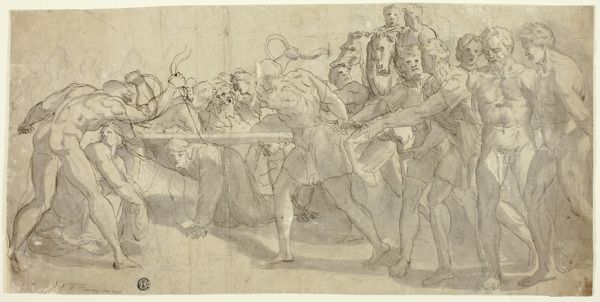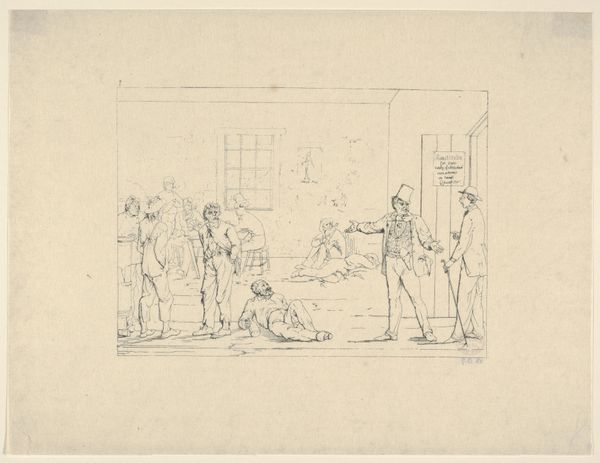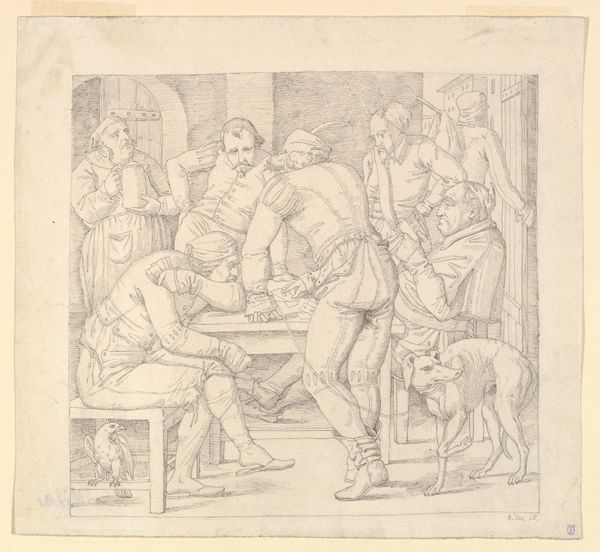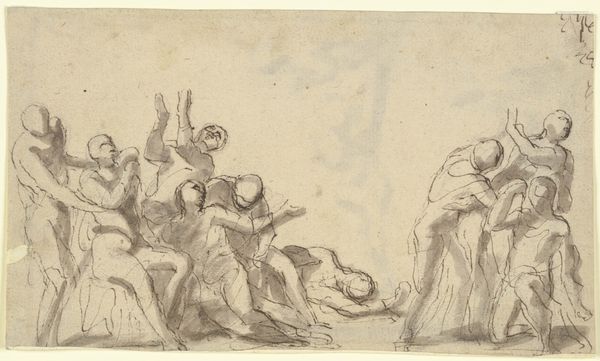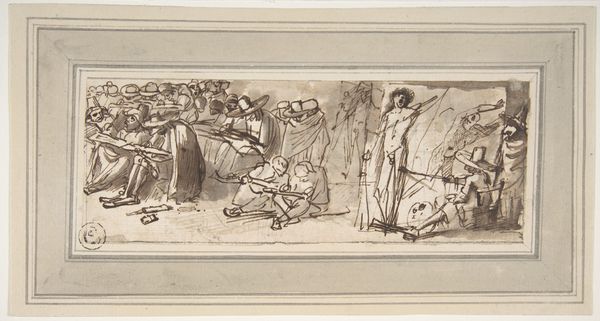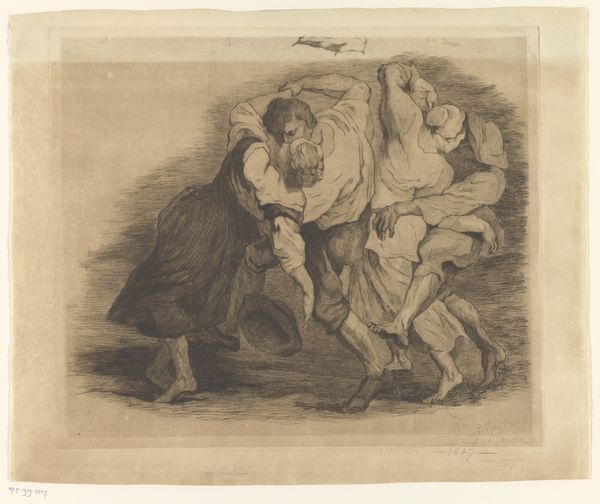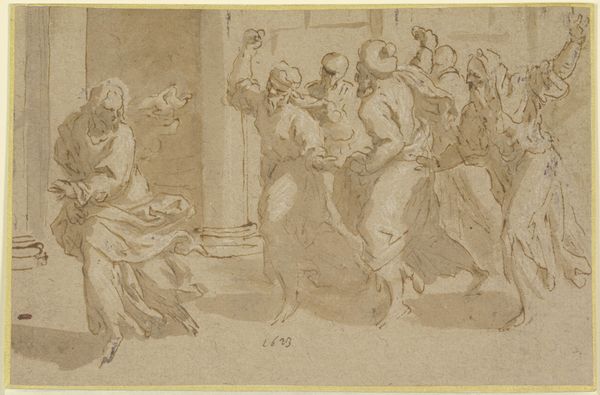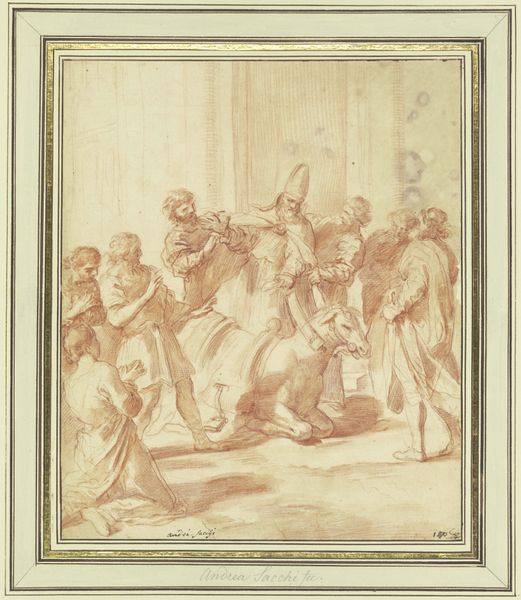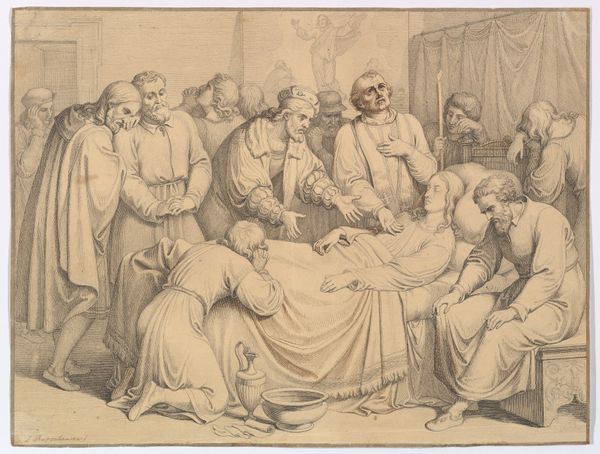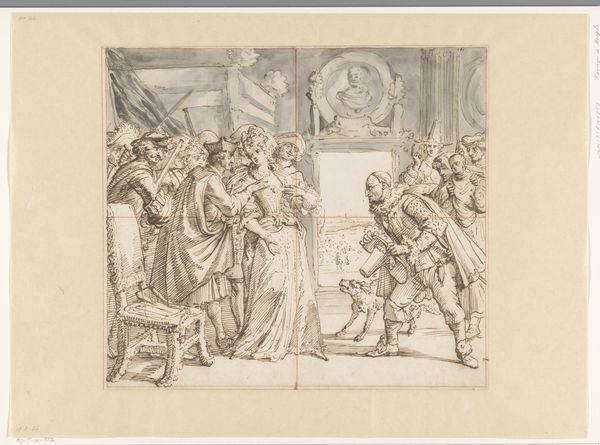
drawing, print, ink, pencil
#
drawing
#
ink drawing
#
narrative-art
# print
#
pencil sketch
#
figuration
#
ink
#
pencil
#
genre-painting
#
history-painting
#
academic-art
Dimensions: sheet: 7 7/8 x 11 3/8 in. (20 x 28.9 cm)
Copyright: Public Domain
Curator: Oh, it has this melancholic charm, almost like witnessing a scene from a play. Editor: This is "Domestic Scene", a 19th-century drawing now housed at the Metropolitan Museum of Art. It’s rendered in ink and pencil, offering us a glimpse into…well, what exactly do you think is going on here? Curator: Right? Initially, I was drawn to the light, ethereal quality. It’s predominantly monochrome, delicate, like a forgotten memory sketched on paper, until I began to wonder what memory? Everyone is facing in such different directions. What's the pull all about? Editor: Perhaps it’s the moment before or after a marriage proposal? The woman, face hidden, almost shielded by her companion and the seated figure at her feet might represent supplication or subservience, while a group of figures appear to physically bind and tug a seated figure back. It feels to me like an anxious scene in transition. The group in the back looks gleeful in this anxious setting. Curator: Exactly! This pushing-pulling captures this push and pull feeling quite poignantly. It is not clear if what is going on is a celebratory event. It also calls to mind all kinds of rituals; it could be a critique, a blessing, or even a kidnapping for all we know, right? The figures don't give much away with expression alone. Editor: Indeed, there’s a definite ambiguity. One could interpret it through the lens of 19th-century gender roles, family obligation or perhaps, commentary on the constraints women often faced with patriarchal society's rigid expectations concerning marriage and domestic life. Is this a forced, sanctioned partnership? It is difficult to be sure! Curator: Maybe that's the real stroke of genius here: its elusiveness! It gives the imagination such room to play. Though I can't help thinking the person kneeling isn’t entirely happy... I get the feeling they are a lamb to slaughter. I suppose it captures something vital about how family units operated in closed door spaces, as well. Editor: Precisely. While ostensibly depicting a 'domestic scene,' it provokes reflection on underlying dynamics, the tensions that exist within these close quarters and what constitutes agency, support, and coercion in familial arrangements. We will never really know unless new scholarship sheds some new light. Curator: Such an intriguing dance of shadows and implications... Makes you wonder about your own, doesn’t it? Editor: It does, yes, particularly about the unseen struggles within familiar frameworks.
Comments
No comments
Be the first to comment and join the conversation on the ultimate creative platform.

